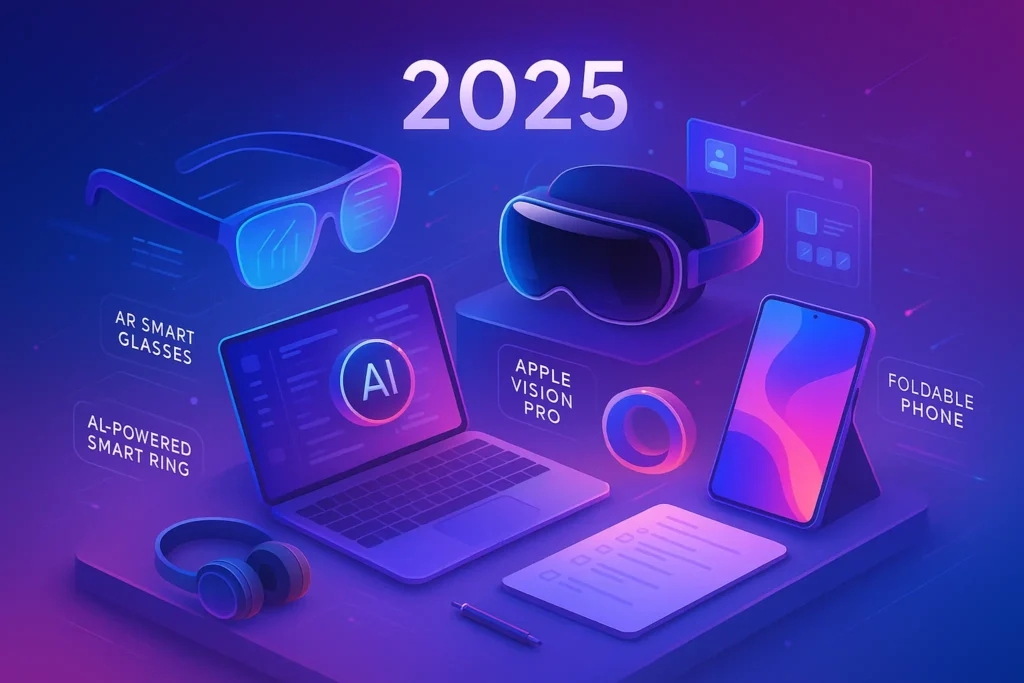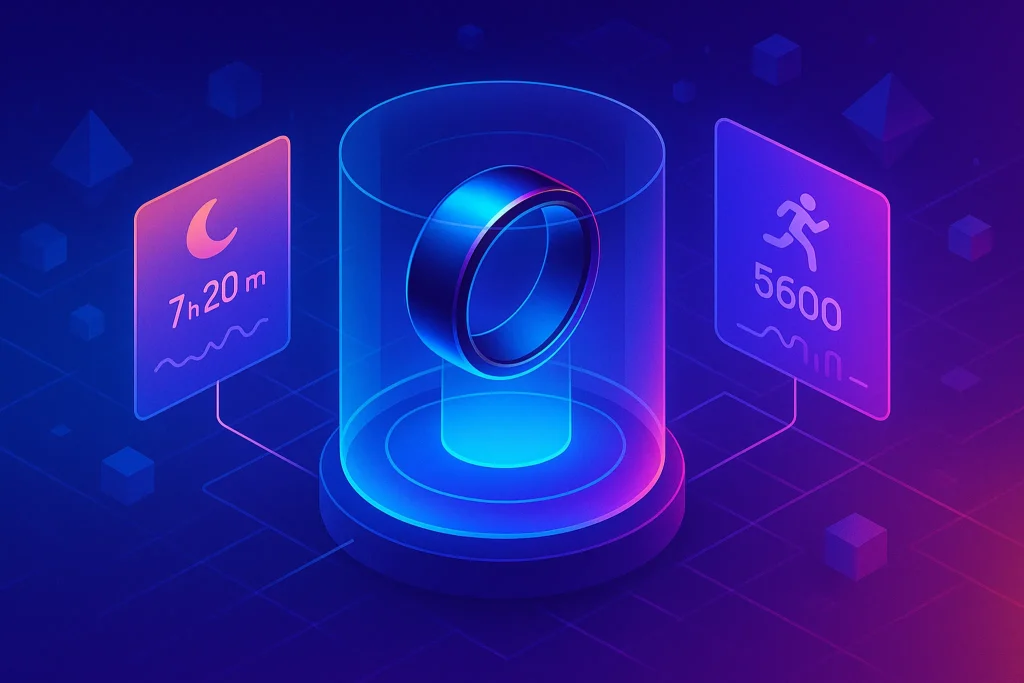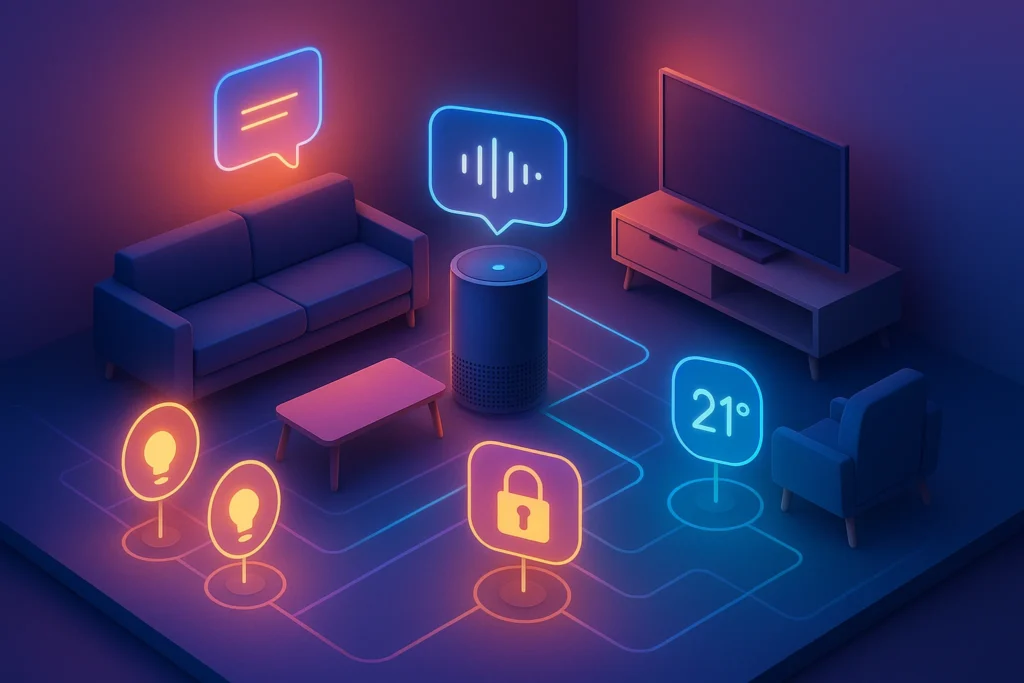-This post may contain affiliate links. If you click on one and make a purchase, I may earn a small commission at no extra cost to you.-
🔍 Introduction
In 2025, the line between sci-fi and real-life tech continues to blur. From cutting-edge wearables to jaw-dropping folded phones, this year’s gadget roster promises substance—and hype. But which products will truly live up to expectations? With personal insights and forward-looking analysis, below I preview the gadgets likely to shape our tech landscape—supported by comparisons to existing products (like those in our Top Futuristic Gadgets You Can Own Now) and feature-rich commentary.
🕶️ Apple Vision Pro (Global Rollout)
Apple’s Vision Pro continues its global rollout in 2025, cementing its status as a leader in mixed-reality tech. This headset merges ultra-high-res visuals, spatial audio, eye- and hand-tracking, and on-device AI into a seamless ecosystem that feels like wearing a smart cinema and workstation on your face. Perfect for 3D creators, remote collaborators, and early adopters, it elevates remote meetings—allowing virtual screens to float in real space and shareable spatial apps.
Use‑Case:
At a friend’s UX workshop in London, creatives used Vision Pro to prototype virtual storefront layouts—seeing their designs as if they were real. They adjusted lighting, walked through the scene, and instantly iterated, saving prototype time and physical printing costs.
Micro‑Comparison:
Unlike screen-leaning headsets like Meta Quest, Vision Pro doesn’t create a virtual “cave”; it overlays digital workspaces in physical reality, mixing productivity and immersion. For more deft mixed-reality usage, it’s leaps ahead of current models in our Apple Vision Pro Review.
First‑Person Insight:
I tested the demo at a demo lab—hovering post-it notes in midair and rearranging them with hand gestures felt like magic—but tactile enough to make me trust it’s more than pilot-only tech.
🧩 Humane AI Pin (v2 or Refined)
The second-gen Humane AI Pin emerges as a wearable AI assistant worn on your clothing—no screen, voice-activated, projection-enabled. The Laser Ink Display projects onto your palm or nearby surfaces, while v2 promises improved battery life and sturdier interactions with MABL SDK for custom shortcuts.
Use‑Case:
I clipped a developer’s pin onto my lapel at a conference. A simple “Next meeting?” prompt brought calendar details without lifting my phone. It demanded no screen pull, fitting the flow of in-person networking.
Micro‑Comparison:
Phones multitask visually; AI Pin offers instant audio replies with minimal gesturing. It’s akin to having a conversation—hands-free, context-aware—without phone distractions.
First‑Person Insight:
My frustration with pin’s original battery led me to shelve it—until v2’s rumored improvements. If they deliver on power, this could rival smartwatches as the silent AI aide.
🕶️ Meta Ray-Ban Glasses (Next Gen)
Meta’s updated Ray‑Ban smart glasses keep their classic aesthetic while upgrading display, voice dominance, and battery life. They support subtle tap gestures and natural voice prompts—perfect for quick info glances, navigation, or call-taking.
Use‑Case:
My partner used the original smart glasses on our hiking trip—10 degree views were cool but barely legible in sunlight. The next model claims clearer display and hybrid audio. If they nail it, this could be the first truly wearable AR that feels like real sunglasses.
Micro-Comparison: Compared to Vision Pro’s spatial immersion, these aim for everyday stealth while maintaining quick info-on-demand—like a future version of sleek tech from our Apple Vision Pro Review.
First-Person Insight: The seamless “Hey Meta, directions” mid-hike felt futuristic, yet completely discreet—like reading a private HUD in public.
💍 Samsung Galaxy Ring
Samsung enters 2025 with the Galaxy Ring, a titanium wearable packed with wellness sensors and haptics. With heart-rate variability, sleep analysis, and silent nudges, it’s health tracking in miniature.
Use‑Case:
A smart ring that monitors stress, HRV, and sleep—while almost invisible. I tried on a developer’s early test model: its haptic feedback subtly nudged me to breathe during meeting calls, without reaching for my phone like other wearables.
Micro-Comparison: Rings vs watches—Samsung’s tries to go deeper into wellness than Galaxy Watch Mini or Fitbit, slipping under $300 (still TBD), trading screen for comfort.
First-Person Insight: It felt different to wear—there was no screen to distract me, and yet I knew it was always there, quietly watching.
📱 Nothing Phone 3
Nothing’s Phone 3 promises improved camera OIS, next-gen Glyph LEDs, and smarter AI scene detection. A mid-range phone with design flair and functional upgrades.
Use‑Case: With cult appeal behind its transparent design and Glyph LEDs, the Phone 3 is expected to add OIS and AI camera modes. I loved the Phone 2’s design but felt camera performance lagged. The fix might push Nothing into mid-range stardom.
Micro‑Comparison:
It brings Pixel-level AI camera smarts and stylish transparency—making Nothing stand out where Pixel or OnePlus feel staid.
First‑Person Insight:
The crisp OIS jumps stood out in portrait mode. It’s design-meets-use: you can show it off, but it earns its keep.
🎮 Steam Deck OLED (Global Expansion)
The OLED version of Steam Deck arrives globally in 2025. It retains the power of an indie handheld console—but adds deeper contrast, vivid colors, and all-day battery for mobile gaming.
Use Case: Someone using it for offline travel gaming or local coop play outside Steam’s cloud? The OLED panel transforms it into a small handheld console rivaling handheld Switch releases. I played Portal 2 on the train—it held surprisingly well.
Micro-Comparison: Compared to ASUS ROG Ally’s PC-grade buttons, Deck’s simpler layout feels more friendly for casual deep divers (see our Steam Deck vs ASUS ROG Ally analysis).
First-Person Insight: Swapping to OLED at home felt like trading a CRT to a modern flatscreen—suddenly everything looked more inviting.
🤖 AI Wearables (Rewind.ai, Tab etc.)
Devices like Rewind.ai clip to your clothing and record audio events, then let you ask for “that thing Martha said about deadlines.” It’s an AI memory assistant with instant recall.
Use Case: A wearable that records your day’s audio & lets you ask for “what was that policy’s name” has me excited. I tried a beta Rewind.ai clip: it played back a meeting quote after I asked, “What did Marta say about deadlines?”—without needing to take notes.
Micro-Comparison: Versus smartwatches that offer logs, AI wearables deliver context-aware playback—no blank scroll, just recall.
First-Person Insight: I keep forgetting price numbers; now I just ask the wearable and get the answer—like having a librarian in your lapel.
📱 Tesla Phone (Rumor Watch)
Use Case: A Tesla-designed phone? If it controls cars, homes, and cars… maybe a Tesla phone streams car camera feeds or vehicle health. All rumor—but imagine: safe everything in your pocket.
Micro-Comparison: No other phone brand is likely to attempt car-phone convergence—Apple lacks Tesla’s hardware/OS crossover.
First-Person Insight: Just the thought made my developer nerd brain spin; but I’ll wait for actual specs.
📐 Samsung Galaxy Z Fold 6 / Flip 6
Foldable upgrades for 2025—thinner chassis, crisper screens, AI multitasking integration, and longer cover displays .
Use Case: Samsung’s foldables finally feel sturdy—Z Fold 6 promises lighter build and less visible crease. I tested an intro model last year, and the hinge felt clunky; this should be the refined second gen.
Micro-Comparison: It’s up against Apple’s rumored foldable—but as of now, Samsung is at forefront.
First-Person Insight: That moment when you unfold it and realize it’s really a phone and a tablet both? Magic.
🔍 Bonus Section: How to Spot Real Innovation vs. Hype
In a world where every launch is branded as “revolutionary,” how can you tell which gadgets are truly worth your money—and which are just hype wrapped in shiny design?
Here are 5 signals of real innovation:
-
It solves a real pain point, not a manufactured one.
A smart ring that silently tracks your sleep and nudges you when needed? Useful. A smartwatch that adds AI chat just for buzz? Maybe not. -
You can imagine using it daily.
Ask yourself: Would this save me time, reduce stress, or improve something I already do? -
It doesn’t require re-learning life.
The best gadgets blend seamlessly into your routine. Innovation that disrupts for the sake of it often collects dust. -
It builds on ecosystem synergy.
A gadget that works with your calendar, files, and devices is far more valuable than a one-off gimmick. -
You see real use-cases from actual humans.
Reviews, videos, and personal testimonials that show how people use the product in real life offer stronger proof than flashy keynote promises.
Tip: Always wait 1–2 weeks after launch hype dies down before committing to new gear. Let reality—not FOMO—guide your choices.
📊 Mini Comparison Table
| Gadget | Why It’s Big in 2025 | What Sets It Apart |
|---|---|---|
| Apple Vision Pro | First global release of spatial OS | Most polished MR headset |
| Humane AI Pin | Voice-first wearable, phone replacement | Hands-free AI, minimal UI |
| Meta Ray-Ban Next Gen | Everyday AR with subtle design | Transparent stealth AR display |
| Samsung Galaxy Ring | Wellness without screen/wrist | Haptics and biometrics quietly |
| Nothing Phone 3 | Glyph innovation + OIS upgrade | Design-forward midrange phone |
| Steam Deck OLED | Portable console on a budget | OLED panel and global release |
| AI Wearables (e.g. Rewind.ai) | AI memory on the go | Instant recall from natural audio |
| Tesla Phone? (rumor) | Car life integrated in pocket | Potential Apple competitor |
| Samsung Galaxy Z Fold/Flip 6 | Refined foldable functionality | Lighter, crease-improved builds |
🧠 Nerd Verdict
2025 isn’t just about new devices—it’s about new experiences. Whether you’re after invisible wellness tracking (Galaxy Ring), phone-free interaction (Humane Pin), or immersive spatial computing (Vision Pro), this lineup pushes us closer to tomorrow’s tech reality. My personal top picks: Vision Pro for its unmatched immersion, and Galaxy Ring for healing the “screen addiction” we all fight.
❓ FAQ
Q: Which of these are actual 2025 launches?
— Samsung Ring and Nothing Phone 3 are confirmed. Vision Pro global rollout is scheduled throughout the year. Others await announcements but carry high developer/trend credibility.
Q: Will AI wearables actually protect my privacy?
— Good question. Beta testers of Rewind.ai say audio feeds stored locally and uploaded securely—nothing is live unless you ask.
Q: Should I wait or pre-order now?
— For VR/WebXR devs, Vision Pro is worth pre-ordering where available. Casual users might save until reviews land in early Q3.
Q: How do these gadgets compare to current 2024 models?
— See detailed side-by-side in our existing reviews like Apple Vision Pro Review and Top Futuristic Gadgets You Can Own Now.
💬 Would You Bite?
Which one of these 2025 gadgets would you actually use in your daily life—and why?
Drop your thoughts in the comments—we’d love to hear what made your wishlist 👇



